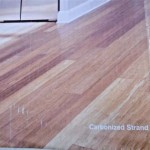Underlayment for Laminate Flooring Over Concrete
Installing laminate flooring over a concrete subfloor offers numerous benefits, including affordability, ease of installation, and aesthetic versatility. However, a successful and long-lasting laminate floor installation on concrete hinges significantly on the correct selection and installation of the underlayment. The underlayment serves multiple crucial functions, acting as a moisture barrier, providing cushioning, reducing noise, and leveling minor imperfections in the concrete surface. Without a proper underlayment, laminate flooring installed over concrete is highly susceptible to moisture damage, unevenness issues, and increased noise transmission, ultimately compromising the floor's structural integrity and aesthetic appeal.
Concrete, by nature, is a porous material capable of absorbing and releasing moisture from the ground below or from the surrounding environment. This inherent property makes it imperative to address moisture concerns before installing any flooring, particularly laminate, which is susceptible to warping and damage from excessive moisture exposure. Selecting the appropriate underlayment designed to act as a moisture barrier is therefore a critical step in the installation process, ensuring the longevity and performance of the laminate floor.
Beyond moisture control, the underlayment also plays a vital role in providing a comfortable and quiet walking surface. Concrete is a hard and unforgiving substrate, and without the cushioning provided by the underlayment, the laminate flooring can feel hard underfoot and amplify impact noises. The underlayment absorbs some of the impact, creating a more comfortable and quieter environment. Different underlayment materials offer varying degrees of cushioning and sound absorption, and selecting the appropriate type depends on the specific needs and desired outcome of the installation.
Furthermore, concrete surfaces are rarely perfectly level. Even seemingly minor imperfections in the concrete can translate into noticeable unevenness in the finished laminate floor. Underlayment can help to bridge small gaps and smooth out minor irregularities in the concrete surface, creating a more even and professional-looking floor. However, it's crucial to note that underlayment is not a substitute for proper concrete leveling. Significant dips or rises in the concrete surface must be addressed before underlayment installation.
Key Considerations When Choosing Underlayment
Selecting the right underlayment for laminate flooring over concrete involves evaluating several factors to ensure optimal performance and longevity. These factors include the moisture resistance properties, sound absorption capabilities, impact insulation qualities, and the ability to level minor imperfections. The intended use of the space, along with the limitations of the concrete substrate, will determine the best underlayment for the specific project.
Moisture resistance is paramount when installing laminate flooring over concrete. It’s essential to conduct a moisture test on the concrete slab to assess its current moisture content. A calcium chloride test kit, available at most hardware stores, is a common method for determining the Moisture Vapor Emission Rate (MVER) of the concrete. Exceeding the laminate manufacturer’s specified MVER limit will necessitate a more robust moisture barrier underlayment or may even require additional mitigation measures such as a concrete sealant.
Sound absorption, or Sound Transmission Class (STC), refers to the underlayment's ability to reduce noise transmission through the floor. Impact Insulation Class (IIC) measures the underlayment's ability to reduce impact noise, such as footsteps. If soundproofing is a concern, especially in multi-story buildings or homes with shared walls, selecting an underlayment with a high STC and IIC rating is crucial. These ratings are typically provided by the underlayment manufacturer and are easily accessible on the product packaging or specification sheets.
The thickness and density of the underlayment contribute to its impact insulation and cushioning properties. Thicker, denser underlayments generally provide better shock absorption and a more comfortable walking surface. However, it's important to consult the laminate flooring manufacturer's recommendations regarding the maximum allowable underlayment thickness, as exceeding this limit can compromise the locking mechanism of the laminate planks.
While underlayment can help to smooth out minor imperfections, it's not designed to compensate for significant unevenness in the concrete slab. Addressing any dips or rises greater than the laminate manufacturer's tolerance is essential before installing the underlayment. Self-leveling compounds are available to correct uneven concrete surfaces, ensuring a flat and stable base for the laminate flooring.
Types of Underlayment Suitable for Concrete Subfloors
Various types of underlayment are available for laminate flooring installations over concrete, each offering different properties and benefits. The choice of underlayment depends on the specific requirements of the project, including moisture concerns, soundproofing needs, and the levelness of the concrete slab. Some of the most common types include polyethylene foam, cork, rubber, and combination underlayments with integrated moisture barriers.
Polyethylene foam underlayment is a cost-effective option that provides basic cushioning and moisture resistance. It is lightweight, easy to install, and suitable for applications where moisture and sound concerns are minimal. However, polyethylene foam typically offers lower sound absorption and impact insulation compared to other underlayment options. It is also not ideal for uneven concrete surfaces, as it lacks the density to bridge significant gaps.
Cork underlayment is a natural and sustainable option that offers excellent sound absorption, impact insulation, and thermal insulation properties. It is also naturally resistant to mold and mildew, making it a suitable choice for areas with moderate moisture concerns. Cork underlayment is available in various thicknesses and densities, allowing for customization based on specific needs. However, cork can be more expensive than polyethylene foam and may require specialized installation techniques.
Rubber underlayment is known for its superior sound absorption and impact insulation qualities. It is available in various forms, including recycled rubber and synthetic rubber, and is often used in commercial and residential applications where noise reduction is a primary concern. Rubber underlayment is typically denser and more durable than foam or cork, making it suitable for high-traffic areas. It also offers good moisture resistance, although a supplementary moisture barrier may still be required in some cases.
Combination underlayments combine various materials to offer a comprehensive solution. These underlayments often include a moisture barrier film laminated to a foam or cork base, providing both moisture protection and cushioning. Integrated moisture barriers are particularly beneficial for concrete subfloors prone to moisture issues, simplifying the installation process and ensuring adequate protection against moisture damage. Always verify the compatibility of the integrated moisture barrier with the specific laminate flooring product being used.
Proper Installation Techniques for Underlayment
Even the best underlayment will not perform optimally if it is not installed correctly. Proper installation techniques are crucial for ensuring that the underlayment effectively provides moisture protection, sound insulation, and cushioning. This involves preparing the concrete surface, laying the underlayment according to the manufacturer's instructions, and properly sealing any seams or edges.
The first step in the installation process is to thoroughly prepare the concrete surface. This includes cleaning the surface to remove any dirt, debris, or adhesive residue. Any cracks or holes in the concrete should be repaired with a concrete patching compound. The surface should be as clean, dry, and level as possible before proceeding with the underlayment installation.
Next, unroll the underlayment and cut it to fit the dimensions of the room, leaving a small expansion gap around the perimeter. Manufacturers typically have specific recommendations regarding seam overlap and taping, so it is imperative to adhere to those guidelines. Underlayment with integrated moisture barriers typically require taping the seams with a waterproof tape to create a continuous moisture seal.
When installing underlayment, ensure that it lies flat on the concrete surface without wrinkles or bubbles. Secure the underlayment to the concrete with appropriate adhesive or tape, as recommended by the manufacturer. Overlapping seams should be properly taped to prevent moisture from seeping through. Pay close attention to detail, ensuring that the underlayment is installed correctly according to the manufacturer's instructions, as this will ultimately affect the performance and longevity of the laminate floor.
Once the underlayment is installed, carefully inspect it to ensure that there are no gaps, tears, or wrinkles. Address any issues before proceeding with the laminate flooring installation. Following these installation guidelines will help ensure that the underlayment provides adequate moisture protection, sound insulation, and cushioning, resulting in a durable and aesthetically pleasing laminate floor.

Best Underlayment For Laminate Flooring On Concrete

How To Choose Underlay For Laminate Flooring Blog Floorsave

How To Install Laminate Flooring On Concrete Making Maanita

How To Choose Laminate Flooring Underlay Tile Merchant

The Advantages Of Poly Foam Underlay Blog Floorsave

Best Luxury Vinyl Flooring Allfloors Trade Centre

Installing Laminate Flooring Over Concrete The Ultimate Guide Aa Floors

Best Luxury Vinyl Flooring Allfloors Trade Centre

Installing Wood Flooring Over Concrete Diy

Installing Underlayment For Laminate Flooring Fitted Over Concrete
Related Posts








